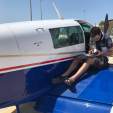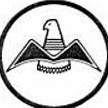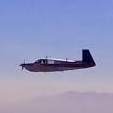All Activity
- Past hour
-
We're always keeping an up-to-date strategy for different makes & models.
-
Of course. The question to ask is how much is it worth. In my area, the cost to split the case and visually inspect the internals is likely around $3-$4K.
-
It all depends on how much it has flown recently and the price but age alone is not an immediate pass for me.
-

Insane impulse coupling issues AGAIN, seeking theories
GeeBee replied to Ryan ORL's topic in General Mooney Talk
I would suggest you forward it to AMS. They might have a viewpoint. -
Insane impulse coupling issues AGAIN, seeking theories
philiplane replied to Ryan ORL's topic in General Mooney Talk
I'm also not a fan of Slick mags, but they certainly do have parts and maintenance manuals, and they have had them since their introduction more than 60 years ago. https://www.championaerospace.com/pdfs/techdocs/F1100/L-1363J_corrected 20210420.pdf -

Transmit Antenna on M20J for a GNX375
Yetti replied to zerotact's topic in Avionics/Panel Discussion
Not even how antennas work. Nor is it how Transponder and ADS-B protocols work. -

Insane impulse coupling issues AGAIN, seeking theories
GeeBee replied to Ryan ORL's topic in General Mooney Talk
This!^^^^^^^^^^^^^^^ -

Transmit Antenna on M20J for a GNX375
N201MKTurbo replied to zerotact's topic in Avionics/Panel Discussion
I installed one in my Cessna. I replaced the transponder antenna with a RAMI antenna. It was reasonable. The problem isn’t old and crusty, it is the old antenna doesn’t have the bandwidth to handle both the transponder and ADS-B signals. https://www.rami.com/product/av-74_transponder/ -
johnny whitson joined the community
-
Flight schools do it routinely, and since those airplanes fly a lot they don't have the usual issues associated with engines that sit for a long time. It doesn't seem unusual for flight schools to get 3000 hours out of engines. Mine is currently sneaking up on 2400 hours, but it had an IRAN about a 1000 hours ago that included rehoning the cylinders, replacing a guide, etc. I have one cylinder that is getting a little quirky on compression (comes and goes) and oil consumption is creeping up. None of that means an overhaul is imminent, just that it needs to be monitored. Borescopes and oil analysis are still great, so I'm not too worried.
- Today
-
Have you verified your dipstick to actual oil in the engine? I just did and found that the dipstick reads one quart low from what I put in. So, reading 6 quarts is in reality 7. Just found it interesting.
-
Insane impulse coupling issues AGAIN, seeking theories
KSMooniac replied to Ryan ORL's topic in General Mooney Talk
QAA and Hartzell are a match made in hell, sorry. And both of them working on a Slick mag, no thanks. Sorry you're going through this! I concur with converting to Bendix and optionally a Surefly or ElectroAir. I never had any such issues with my Bendix dual mag and now with two ElectroAir systems. -
Transmit Antenna on M20J for a GNX375
PT20J replied to zerotact's topic in Avionics/Panel Discussion
If you believe that, you might also want to replace all your nav/com antennas as they also have BNC connectors. But if your BNC connector is truly "crusty" with visible corrosion, then that's a different matter. -
I did that once, bought a 0 SMOH engine that had been sitting for 11 years. I took it to the local engine shop and had them tear it down and put it back together. They only charged me $700. That was in 95, so it will be more now. The only thing he found was some rust in the cylinders. He rehoned them. It turned out to be a good engine.
-
Retract Gear or Flaps First in a Go Around ?
PT20J replied to donkaye, MCFI's topic in Modern Mooney Discussion
For those that like landing with the speed brakes deployed, what to you raise first on a go around? -
This is exactly why the wise/experienced folks over on Beechtalk recommend fixing factory-new Continental cylinders before putting them into operation. The factory just does not do a great job installing valves! There are lots of PIREPs from Powermaster overhaul customers making full TBO+ runs without doing tops, and of course there are magnitudes more PIREPs of TOH on factory engines in the ~800+/- hour range due to valve degradation.
-
Retract Gear or Flaps First in a Go Around ?
DCarlton replied to donkaye, MCFI's topic in Modern Mooney Discussion
I like the emphasis the brief pause provides on positive rate; I may use this. I've observed myself enough over the years to know that positive rate is something I really need to focus on in a missed approach or go around (as opposed to continuing to fly level like you often do in a pattern). [will never forget the jet that took off IFR from my home airport several years ago; didn't climb and flew into the power lines; saw the black smoke plume; very sad.] -
SureFly with EAREM37HE plugs? Slick failure?
KSMooniac replied to John Mininger's topic in General Mooney Talk
Was this a case of the installer not RTFM? (reading the manual) I put in a dual ElectroAir kit in my -A3B6D J and the manual was quite explicit about setting the engine to TDC #1 when installing the timing housing (on the mag interface) or the trigger wheel on the crankshaft. -
SureFly with EAREM37HE plugs? Slick failure?
John Mininger replied to John Mininger's topic in General Mooney Talk
I have a G3X with EIS. I never let the CHTs go much past 400 before I did something about it. They rarely went much past 400 with the cowl flaps open. With the cowl flaps closed however, about 8.8 GPH was about all the power you could make without the CHTs going crazy. I once let it go to about 425 before I started leaning. That was about 9.5 GPH. Maybe it would have gone to 600! -
Would you but an IO-360 with 550 hours on it since overhaul that was done 15 years ago? Considering it’s impossible to see the cam and lifters during inspection?
-

Retract Gear or Flaps First in a Go Around ?
donkaye, MCFI replied to donkaye, MCFI's topic in Modern Mooney Discussion
I haven't flown the Skywagon, but I think all the high wing airplanes I have flown pitch up when flaps are applied and the opposite when flaps are retracted. Why? The CG of a high wing airplane is below the drag force vector of the flaps causing a pitch up moment around the CG when flaps are applied. The opposite for a low wing airplane like the Mooney. (The exception is the Piper. Maybe the reason is its stabilator. I don't know) At any rate you can't compare the two. I will say on the 310 HP upgrade to the Acclaim, going to full power on a go around and bring the flaps up 1st will provide quite a surprise to the uninformed that could easily lead to an LOC accident. -
Retract Gear or Flaps First in a Go Around ?
Kelpro999 replied to donkaye, MCFI's topic in Modern Mooney Discussion
I’m for removing all nonproductive energy consumption on any ascent as soon as possible. -
EKoS changed their profile photo
-

Retract Gear or Flaps First in a Go Around ?
donkaye, MCFI replied to donkaye, MCFI's topic in Modern Mooney Discussion
Vlo (going up) is 106 kts for the Acclaim Type S. -

Insane impulse coupling issues AGAIN, seeking theories
Ryan ORL replied to Ryan ORL's topic in General Mooney Talk
Here is an opinion from Aircraft Magneto Service, who were kind enough to offer an opinion: Impulse cams failures happen, but I would call it exceptionally rare. QAA are now exclusively using Hartzell components, they have issued at least one service bulletin (SB 225) in which they had an issue with the snap rings coming loose. I have not seen many Hartzell mags 2024 or newer, its not out of the question that they have a manufacturing defect on newer impulse cams. Engine vibrations do reek havoc on impulse cams, If you haven't I would ensure the prop is balanced and no unusual vibrations are occurring. When installing the drive gear on the magneto, the drive gear should have some "slop" to it, end play up and down. I have experienced issues on Hartzell cams before where the gear was too tight and have to polish the black oxide off the portion that fits up through the gear. Also its prudent to apply grease inside the gear to prevent binding. Snap the magneto over in your hand after the gear has been installed and ensure its "smooth", no binding. Steve Cotton AMS -

SureFly with EAREM37HE plugs? Slick failure?
jetdriven replied to John Mininger's topic in General Mooney Talk
Iver seen this before. A member had his Surefly installed at 25 degrees, and had the DIP set to 25 also. After he put the gear up, the CHT continued to 600 degrees which was the gauge limit. He barely got back. It can get you killed. -

Retract Gear or Flaps First in a Go Around ?
Ibra replied to donkaye, MCFI's topic in Modern Mooney Discussion
Indeed, I was merly comparing clean and full dirty settings, there is no middle sitting but ideally, 1/2 flaps is great in Mooney, not too draggy and has lot of extra lift. Even full-flaps are not draggy, the M20J screams in ground effect with full flaps all the way to VY, so I never felt the need to get them up quickly or die, I just lift the gear and bu the time it's "gear safe", I have 80kts-90kts and I pull flaps up. I had someone retracting them at 55kts with 15deg climb after balked landing and go-around, he made my day, luckily the gear was always down as we bounced 2nd time (he balked landing and in 50ms, he put full power, 15deg up pitch and retracted flaps)






